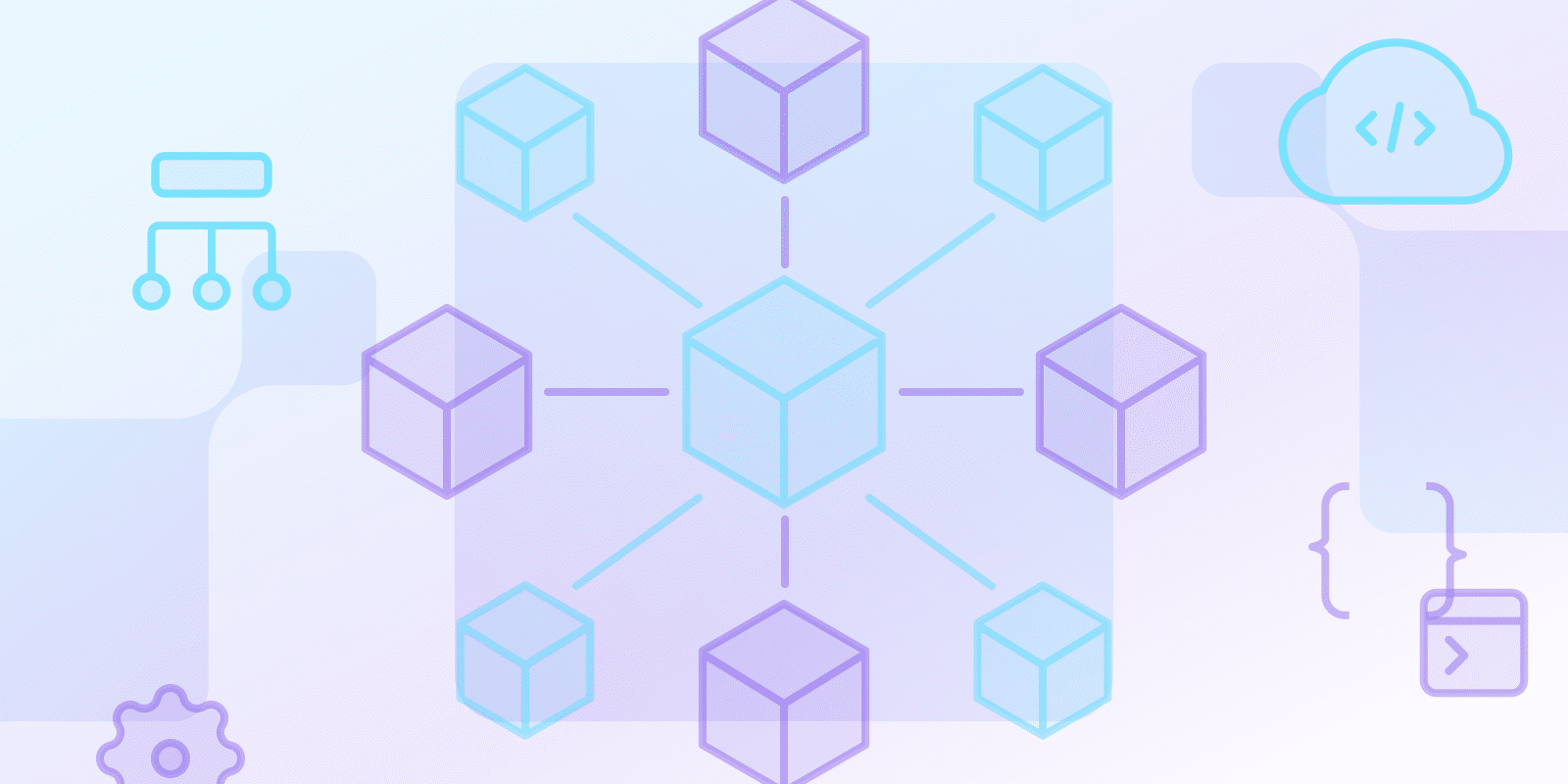클라우드 네이티브 개발
클라우드 네이티브 아키텍처란?

클라우드 네이티브 아키텍처란?
클라우드 네이티브 아키텍처는 클라우드 컴퓨팅 환경 내에서 애플리케이션을 구축하고 실행하는 데 특화된 설계 접근 방식입니다. 결과적으로 이 접근 방식은 리소스 제어와 유연성에 잠재적으로 해를 끼치는 확장성, 탄력성 또는 복원력과 같은 클라우드의 고유한 특성을 활용합니다.
클라우드 네이티브 애플리케이션은 급속한 대응 기능과 변화에 대한 적응성을 포함하여 변동성 있는 클라우드 환경에서 성능을 향상시키는 기능을 통합하도록 설계되었습니다.
모놀리식 애플리케이션을 적응하는 것은 전적으로 실행 가능하지 않습니다. 이 프로세스는 클라우드 환경에 대한 개념의 특성으로 인해 전체 구조를 다시 작성해야 할 수 있기 때문입니다. 반면에 마이크로서비스를 포함한 클라우드 네이티브 아키텍처는 종종 기존 아키텍처보다 현대적 요구 사항에 더 적합한 접근 방식으로 간주됩니다.
클라우드 네이티브와 모놀리식 아키텍처의 주요 차이점은 구조 방식입니다. 모놀리식 애플리케이션은 모든 요소가 통합된 방식으로 설계되는 반면, 클라우드 네이티브 애플리케이션은 느슨하게 연결된 서비스의 마이크로서비스로 나뉩니다. 이 방식은 서비스를 독립적으로 설계, 프로비저닝, 확장할 수 있는 분산된 특성이 특징이며, 이를 통해 더 큰 적응성, 효율적인 리소스 활용, 분산된 아키텍처가 가능해집니다.
클라우드 네이티브와 모놀리식 아키텍처의 주요 차이점은 구조 방식에 있습니다. 모놀리식 애플리케이션은 모든 요소가 통합되도록 설계된 반면, 클라우드 네이티브 애플리케이션은 느슨하게 연결된 서비스의 마이크로서비스로 나뉩니다. 이 방법은 서비스가 독립적으로 설계, 프로비저닝 및 확장될 수 있는 분산된 특성을 가지며, 잠재적으로 더 큰 적응성, 효율적인 리소스 활용 및 분산된 아키텍처를 가져올 수 있습니다.
| 특징 | 클라우드 네이티브 아키텍처 | 모놀리식 아키텍처 |
|---|---|---|
| 구조 및 디자인 | ||
| 구성 요소 조직 | 마이크로서비스로 분할 | 모든 요소가 통합됨 |
| 서비스 결합 | 느슨하게 연결된 서비스 | 밀접하게 통합된 구성 요소 |
| 배포 모델 | 독립적인 서비스 배포 | 단일 유닛 배포 |
| 운영 특성 | ||
| 확장성 | 개별 서비스 확장 | 전체 애플리케이션 확장 |
| 리소스 관리 | 동적 자원 할당 | 고정 리소스 할당 |
| 유지 관리 | 서비스 수준 업데이트 가능 | 전체 애플리케이션 업데이트 필요 |
| 개발 및 적용 | ||
| 개발 유연성 | 높음 (독립적인 서비스 개발) | 제한됨 (협력 개발) |
| 클라우드 환경 적합성 | 기본 호환성 | 상당한 적응 필요 |
| 아키텍처 발전 | 쉽게 적응 가능 | 완전한 재구성 필요 |
클라우드 네이티브 아키텍처를 사용하면 회사의 확장성, 유연성, 지출 모델에도 영향을 미칠 수 있습니다. 확장성: 마이크로서비스로 구성된 매크로 애플리케이션은 워크로드에 따라 개별 서비스의 인스턴스를 추가하거나 의도적으로 제거하여 확장할 수도 있습니다. 복원력: 클라우드 네이티브 애플리케이션은 '격리'와 자가 복구를 사용하여 장애 발생 시 가동 중단을 최소화하거나 방지합니다. 민첩성: 클라우드 네이티브 애플리케이션은 일반적으로 개발 및 배포를 가능하게 하는 마이크로서비스로 구성됩니다. 사용량 기준 가격: 클라우드 네이티브 아키텍처에서 조직은 실제 사용량에 따라 리소스 할당을 수정하여 비용 최적화에 영향을 미칠 수 있습니다.
클라우드 네이티브 아키텍처를 사용하면 회사의 확장성, 유연성, 지출 모델에도 영향을 미칠 수 있습니다.
- 확장성: 마이크로서비스로 만든 매크로 애플리케이션은 워크로드에 따라 별개의 서비스 인스턴스를 추가하거나 의도적으로 제거하여 확장할 수도 있습니다.
- 탄력성: 클라우드 네이티브 애플리케이션은 '격리'와 자가 복구를 사용하여 장애 발생 시 가동 중단을 최소화하거나 방지합니다.
- 민첩성: 클라우드 네이티브 애플리케이션은 일반적으로 개발 및 배포를 가능하게 하는 마이크로서비스로 구성됩니다.
- 사용량 기반 가격: 클라우드 네이티브 아키텍처에서 조직은 실제 사용량에 따라 리소스 할당을 수정하여 비용 최적화에 영향을 미칠 수 있습니다.
클라우드 네이티브 개발에 관련된 핵심 기술은 무엇입니까?
클라우드 네이티브 개발의 핵심이 되는 몇 가지 기술이 있습니다.
- 마이크로서비스: 애플리케이션은 API 호출을 통해 상호 작용하는 세분화되고 느슨하게 결합된 구성 요소로 분해됩니다.
- 컨테이너: CI/CD 동안 모든 소프트웨어 애플리케이션과 모든 종속성은 특정 범위로 분할되어 환경 전반에 걸친 솔루션의 이식성을 향상시킵니다.
- 오케스트레이션: 예를 들어 Kubernetes는 컨테이너화된 애플리케이션을 실행하고 배포하고 확장하기 위한 클러스터를 관리하는 데 도움이 됩니다.
- DevOps: 소프트웨어 릴리스의 효율성을 높이기 위해 개발, 운영, 보안 팀 간의 협력의 핵심 개념을 지적합니다.
- 지속적인 통합/지속적인 배포(CI/CD): 더 빈번하고 반복적인 릴리스를 신속한 피드백과 함께 가능하게 하여 개발 프로세스를 자동화하고 간소화하는 데 중점을 두고 수동 작업에 대한 의존도를 줄입니다.
클라우드 네이티브와 DevOps 접근 방식을 결합하면 더 짧은 시간에 더 적은 비용으로 고객에게 더 많은 가치를 제공할 수 있지만, 결과는 특정 채택 스타일에 따라 달라집니다.
결론
따라서 클라우드 네이티브 개발은 클라우드에서 애플리케이션을 구축하고 운영하는 혁신적인 방법론입니다. 마이크로서비스, 컨테이너, 오케스트레이션을 DevOps 관행과 함께 구현하면 이러한 요인과 조직의 성장 또는 침체에 영향을 미칠 수 있으며, 장애 내성이 생깁니다.
클라우드 네이티브 개발은 출시 시간, 사용자 경험, 잠재적 비용 측면에서 유익할 수 있습니다. 그러나 현대 비즈니스의 현재 디지털 여정에서 고려해야 할 새로운 요소도 몇 가지 있습니다.